YPRES SALIENT - Wijtschate - Mount Kemmel - Lettenberg Bunkers
Years of visit: 2005, 2006, 2016
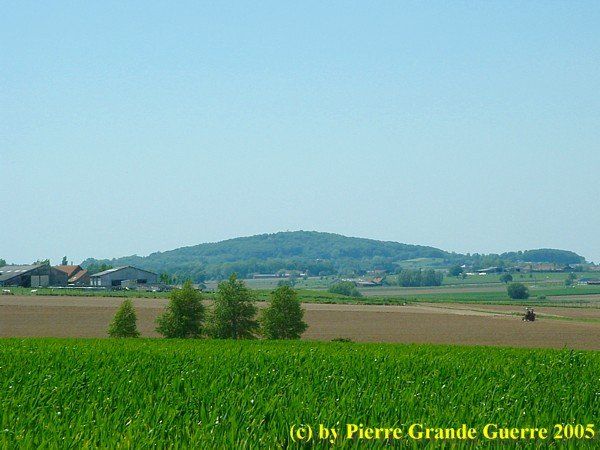
We start our route at the village centre of Wijtschate to visit an area of only 6x4 km., which knew many battles. From Wijtschate we continue northward to the reconstructions of the German Bayernwald Trenches. Next we pass the hamlet of Vierstraat to continue southward via the N 331. From there we will focus on the year of 1918, first with a visit to the Kemmel American Monument. From there we pass the village of Kemmel to visit Mount Kemmel or "Kemmelberg" with its French Victory Memorial and the French "Ossuaire du Mont Kemmel". On this page you will find also frames with background information about these two 1918 battles, the Battle of Vierstraat Ridge and the Battle of Mount Kemmel. We finish our route with a visit to the British 1917 Lettenberg Bunkers.
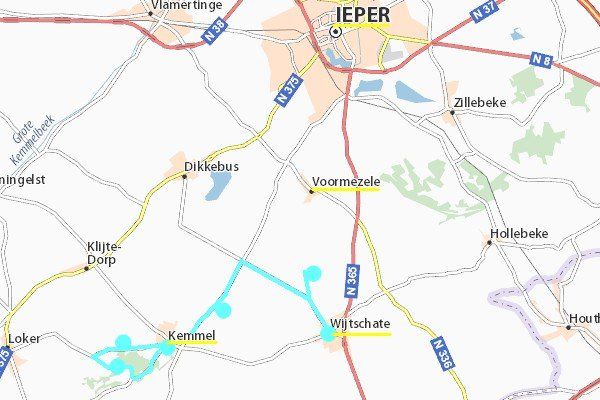
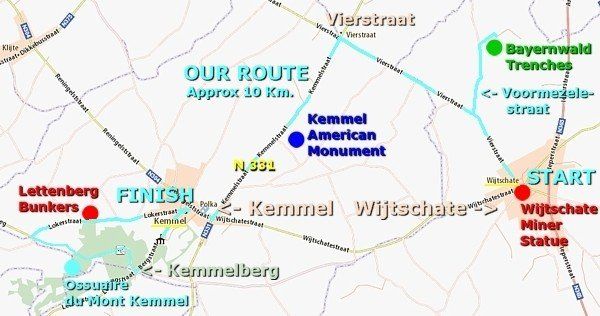
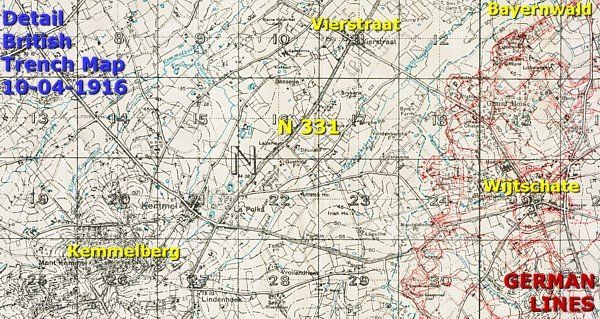
We start our route in the village centre of Wijtschate. At the corner of the St. Menardusplein and the Vierstraat, at the foot of the St. Menardus church stands this 2014 statue of a miner.
It is a tribute to the miner soldiers who tunnelled Beneath the German lines and detonated a series of 19 mines, opening the Battle of Messines.

We continue via the Vierstraat. Outside the village, at a green road sign to “Croonaert Chapel Cemetery” and a brown road sign to “Bayernwald” we go right and continue via the Voormezelestraat.
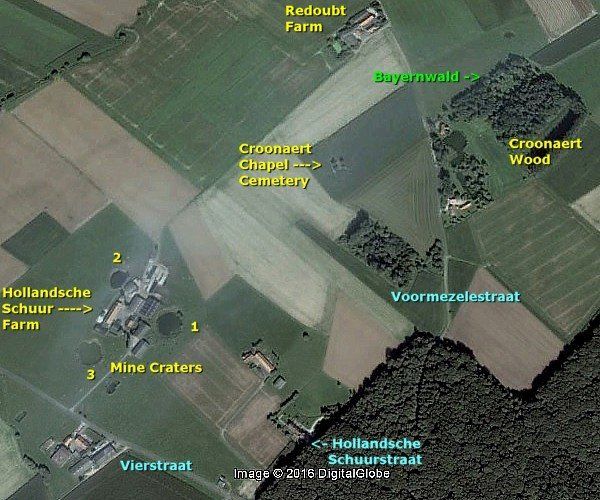
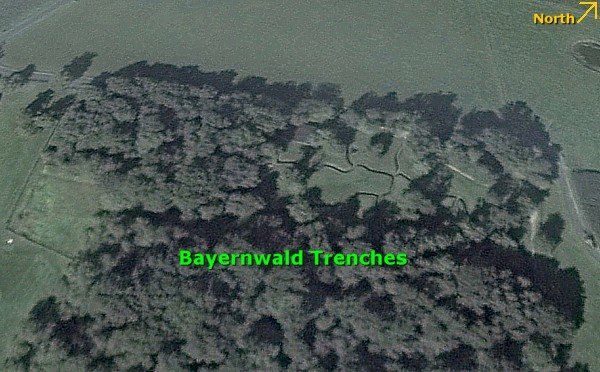
Here we visit the reconstructions of the German Trenches, in the "Bayernwald", or "Bois Quarante", or "Croonaert Wood".
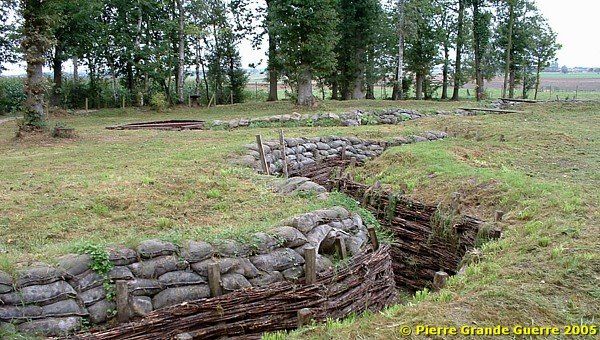
In the autumn of 2005 we explored the Bayernwald trenches and their bunkers with an extended visit.
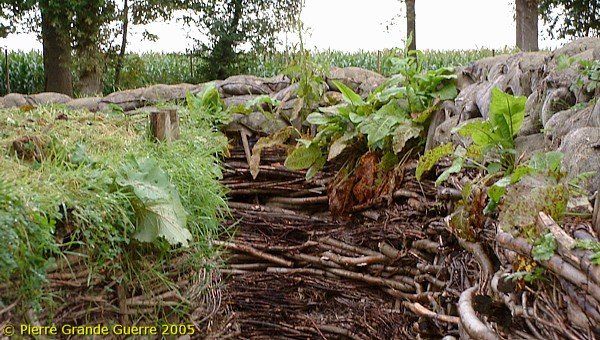
Kronprinz Rupprecht von Bayern, commander in chief of the 6th Bayern Army, conquered this low hill (40m) after fierce fighting in November 1914. He gave the hill its name “Bayernwald”. The Germans then constructed a stronghold on this hill.
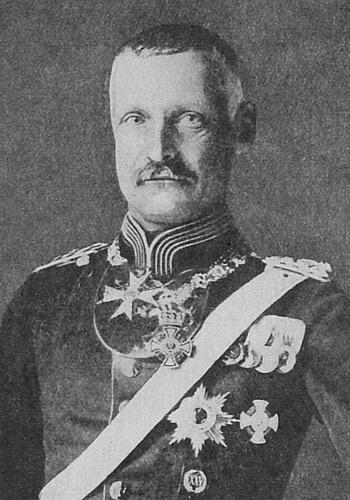
The British troops were only some 750 yards away from here. From 1915 until 1917, day and night, there was constant fighting in this sector. There were night patrols and, during the day, artillery bombardments and machine gunfire, hand to hand fighting in underground tunnels, and of course on the surface of the ground. During the Battle of Messines Ridge, on June 15, 1917, the British forced the Germans temporarily to leave this position. So, the Germans occupied this sector from November 1914 until the summer of 1917. After April 1918 the hill was again in German possession.
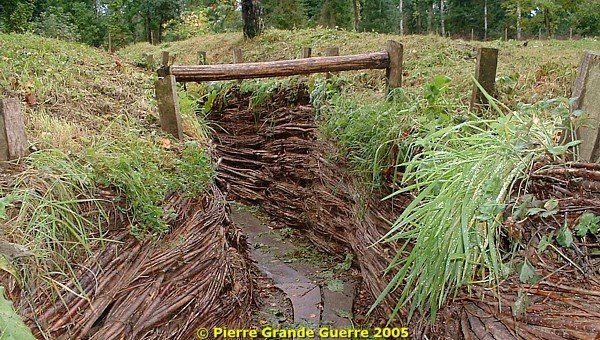
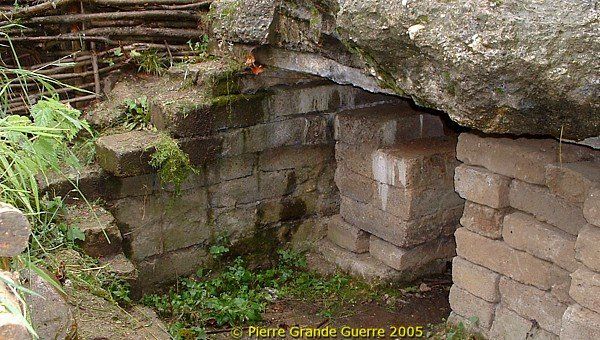
To help you to understand the situation of the Bayernwald during the war I show you two details of a British trench map of September 1915.
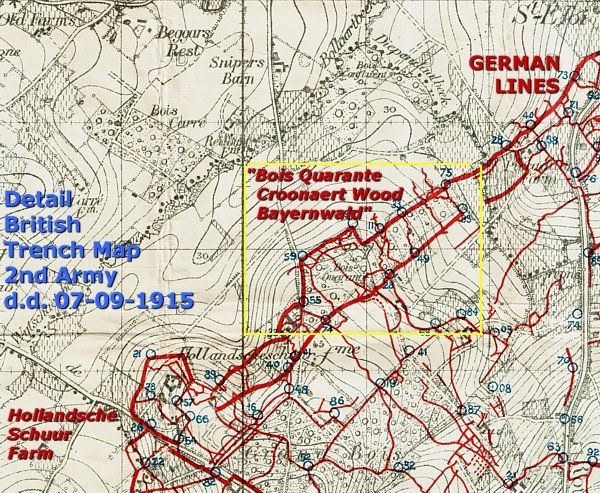

To mark the positions of the British lines I show you a detail of a German trench map of April 1917.
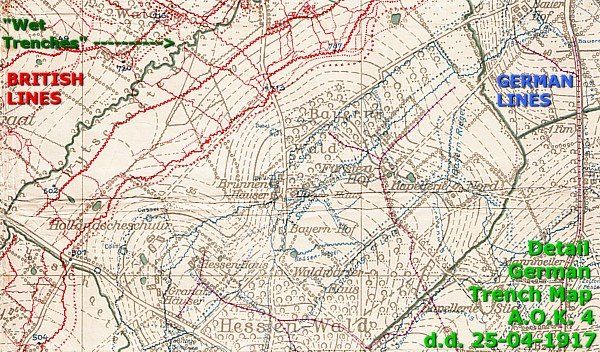
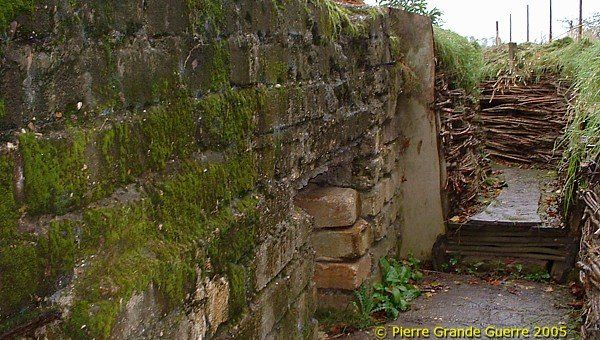
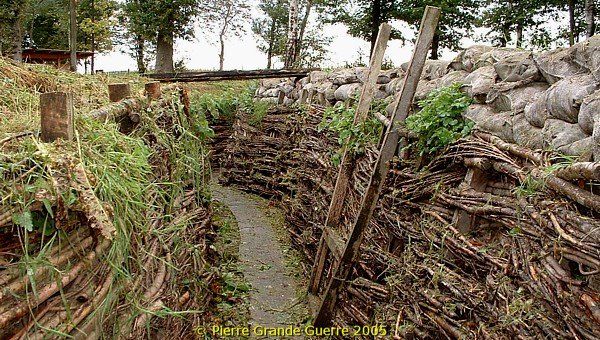
From this point the Germans must have had a perfect view for observations.


The church towers of St. Eloi and Ypres.
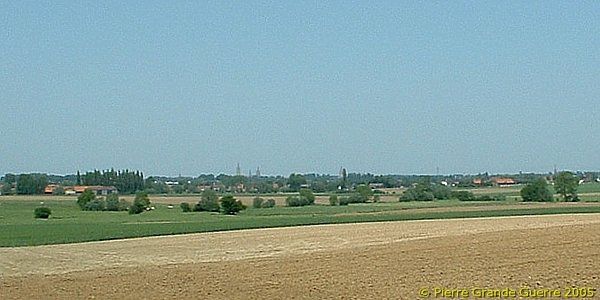
A view from the Bayernwald to the south-east; Mount Kemmel at the horizon, left the "Hollandsche Schuur Farm", right the Croonaert Chapel Cemetery.
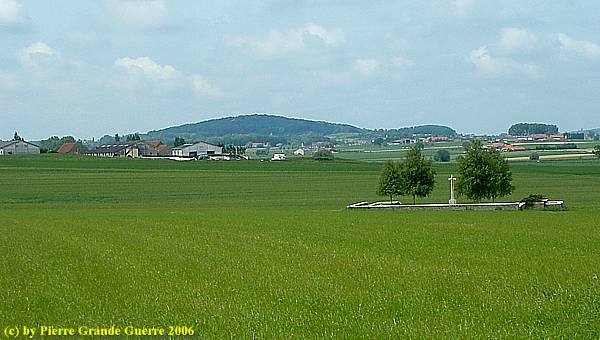
We return to the Vierstraat to continue westward. In the hamlet of Vierstraat we turn left to continue southward via the N 331, on trench maps called the York Road.

View from the outskirts of Vierstraat south-eastward, from the N 331 to the Bayernwald and the church tower of Wijtschate.
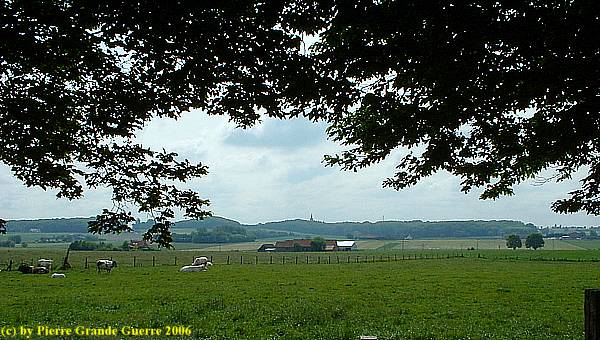
On the left, east side of the road of the "Kemmelstraat" we stop at this post war demarcation stone and the Kemmel American Monument .


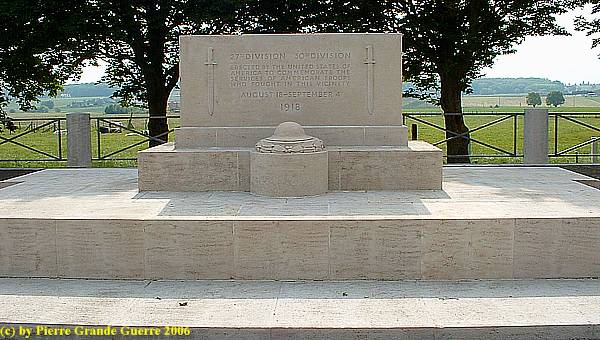
On the map of the memorial, the site of the monument is at Marker 1.

The memorial is almost at the centre of the sector of the US 27th Division.
The Battle of Vierstraat Ridge -
(31 August - 2 September 1918)
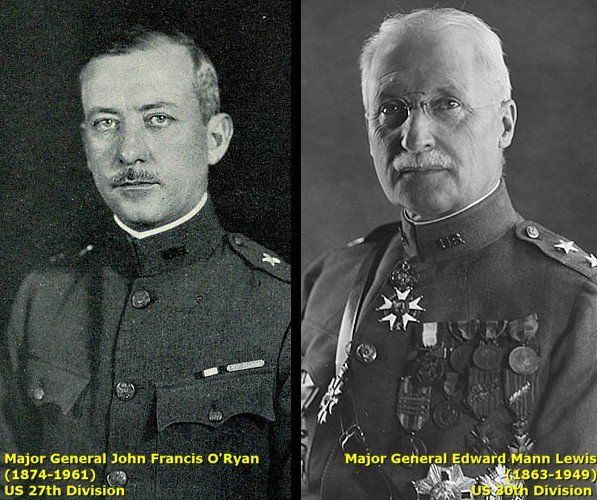
Training by the British Army in France
From their arrival in France in May 1918 the US 27th and 30th Infantry Divisions, each consisting of 25,000 men, were trained by the British Army at the Bay of the Somme, at Rue and St. Valery-sur-Somme.
Both divisions were equipped with British equipment and British rifles!
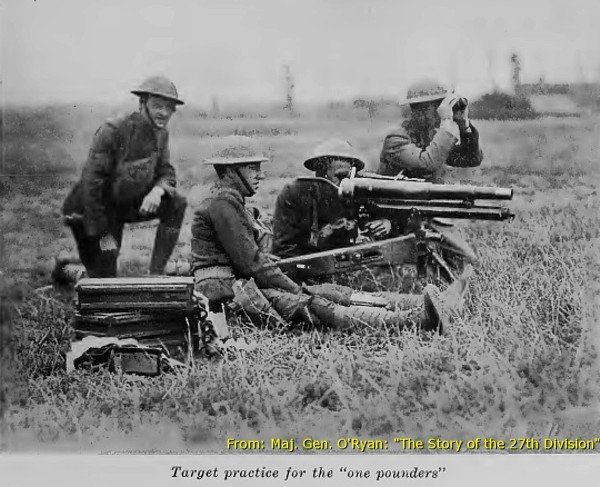
Major General O’Ryan , commanding officer of the 27th, gives the reason in his account, “The Story of the 27th Division”:
“The explanation of this is to be found in the condition already mentioned, that the American troops arrived in France short of much of the materiel requisite not only for combat, but for training. It was necessary, therefore, that upon receipt of machine guns, Lewis guns, Stokes mortars, one pounders, grenades, wireless, sanitary and engineer equipment, the men should be trained in the use of this British type of materiel and armament. (....) In relation to the latter it was determined that the 27th and 30th Divisions should turn in their modified Enfield rifles, because they required the .30 caliber American ammunition, and to substitute for them the British rifles, caliber .303. This step was necessary in order that the two American divisions might use British ammunition and thus avoid complications in ammunition supply which would otherwise occur.”
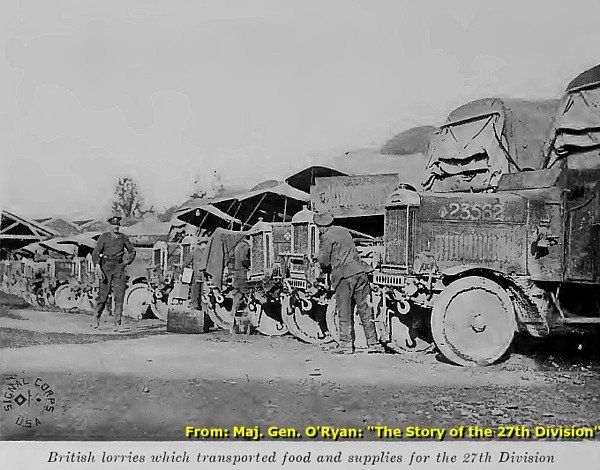
In the second half of July 1918 both American divisions were given the task of further preparing for defence of the "East Poperinghe Line" and of occupying and holding it in the event of attack.
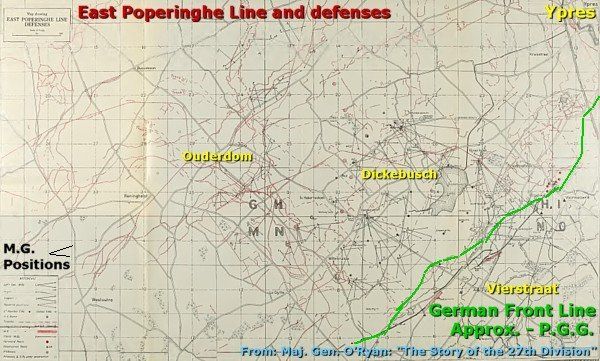
In July and August 1918 these US divisions were integrated and assigned to the XIX Army Corps of Lieutenant General Sir Herbert Watts, a component of the 2nd Army of General Plumer. (Only from October 1918 would these two Divisions o perate, under the direct command of Major General Read, as the Second American Corps .)
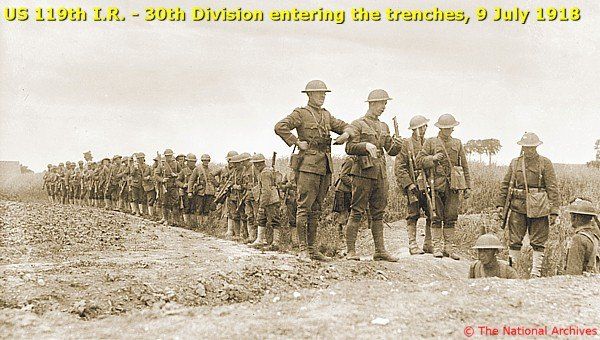
18 August – 4 September 1918 - The 30th Division
During the period of 18 August – 4 September 1918 the 30th Division attacked the sector, north of the hamlet of Vierstraat, from Dickebusch Lake ( Flemish: Dikkebus ) at Voormezele and Zillebeke Lake.
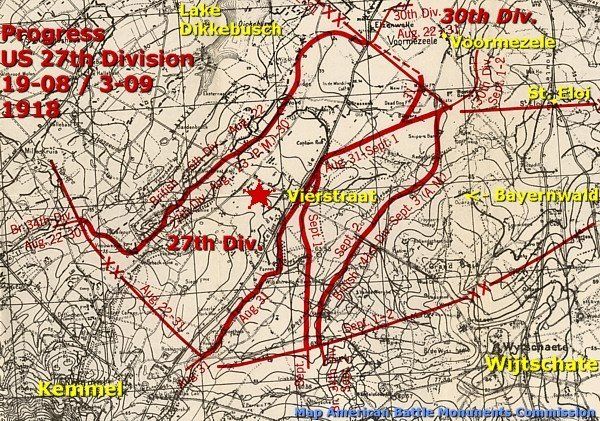
The Battle of Vierstraat Ridge covered this period, culminating between 31 August and 2 September 1918. The goal of the 53rd Infantry Brigade of the 27th Division was to re-capture a part of the Lys Salient , formed after the German offensive of April 1918 including the area around Mount Kemmel.
US 27th Division and the Battle of Vierstraat Ridge
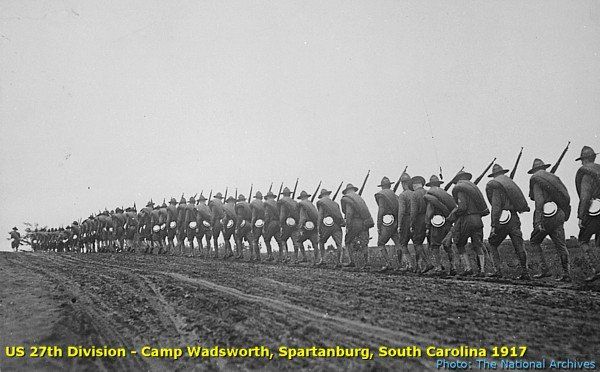
The 30th Division attack in the north in a sense therefore acted as a pivot for the south-east attack of the 53rd Brigade of the 27th Division in this southern battle sector between Voormezele, Vierstraat and Kemmel.
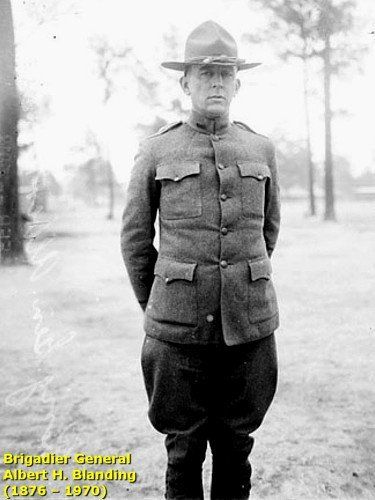
The 53rd Brigade of the 27th Division, commanded by Brigadier General Albert H. Blanding , was composed of the 105th and 106th Infantry Regiments and the 105th Machine Gun Battalion .
The Opponents
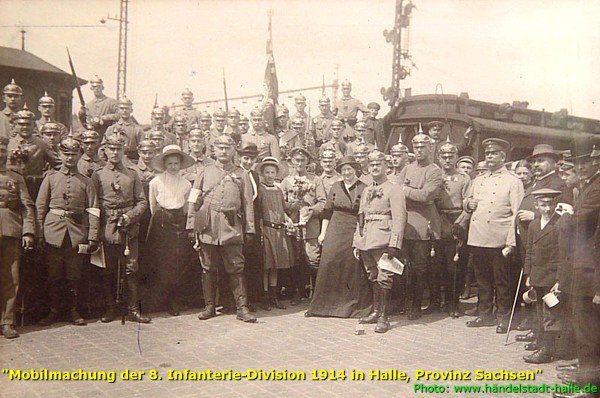
Its opponent was the 8. Preussische Infanterie-Division from Saxony under Generalleutnant Arthur von Hamann , consisting of units of the 4. Thüringisches Infanterie-Regiment Nr. 72, Anhaltisches Infanterie-Regiment Nr. 93, 8. Thüringisches Infanterie-Regiment Nr. 153, 5. Eskadron/Magdeburgisches Husaren-Regiment Nr. 10, Torgauer Feldartillerie-Regiment Nr. 74, I. Bataillon/Reserve-Fußartillerie-Regiment Nr. 1, Pioniere-Bataillon Nr. 118.
31 August 1918

Correspondingly from the 30th Division pivot in the northern battle sector, on 31 August the advance of the left flank regiment of the 27th Division, the 105th under Major Charles W. Berry, was to extend southward. The 105th Infantry Regiment had to support the greater advance on its right by the 106th Infantry Regiment under Colonel William A. Taylor.
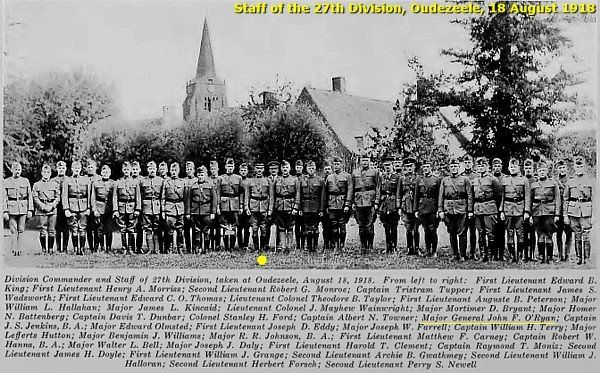
The boundary between the two regimental sectors was the road from Hallebast, south east of Dikkebus, running south-eastward through the hamlet of Vierstraat to Wijtschate, nowadays also called the Vierstraat.

With a "supporting artillery barrage" the 53rd Infantry Brigade attacked south-eastward this sector between Voormezele, Vierstraat and Kemmel and the line between and St. Eloi and Wijtschate, "Wytschaete Ridge".
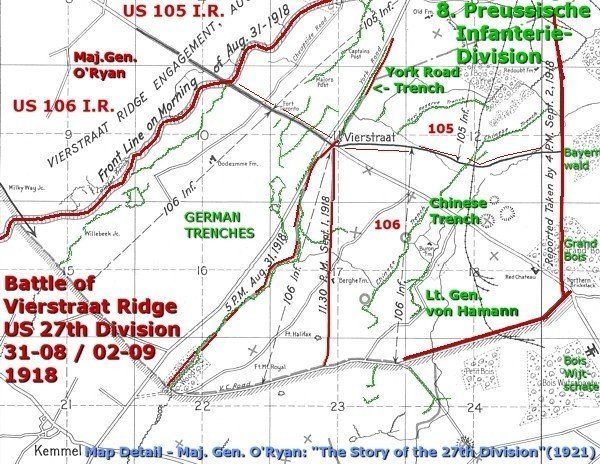
In the afternoon of the first day of the Battle of Vierstraat Ridge, on 31 August, the 105th and 106th captured the “Vierstraat Switch” trench, partly running parallel to the N 331 from the north of Vierstraat to Rossignol Wood, north-east of Kemmel.
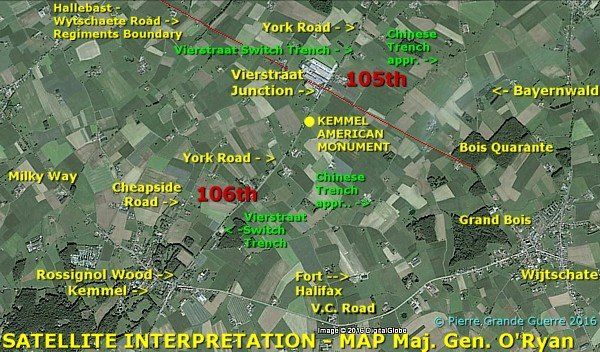
The Battle of Vierstraat Ridge according to Maj. Gen. O'Ryan

In his Chapter XIV, “The Battle of Vierstraat Ridge”, Maj. Gen. John F. O’Ryan provides more details. Contrary to his habit, in this chapter the General uses concise military language. I consider the words of the General himself still highly readable. His own experience from his headquarters at “Douglas Camp” gives us a good impression of the course of the battle. So, I present to you some interesting quotations of O’Ryan, sketching the events from his point of view. To make clear the military names of locations, I posted in between the text fragments images of details of O’Ryan’s battlefield sketch, interchanged by my modern satellite photo reconstructions. My intent is to help you to “navigate” through the battlefield names of O’Ryan’s interesting account of events.
Maj. Gen. O’Ryan writes:
“ On the afternoon of August 31st the 105th Infantry advanced successfully, taking Captain's Post and Major's Post, which appear on the accompanying map , and consolidated their position in the trenches running along the easterly side of the York Road, advancing its left beyond Middle Farm."
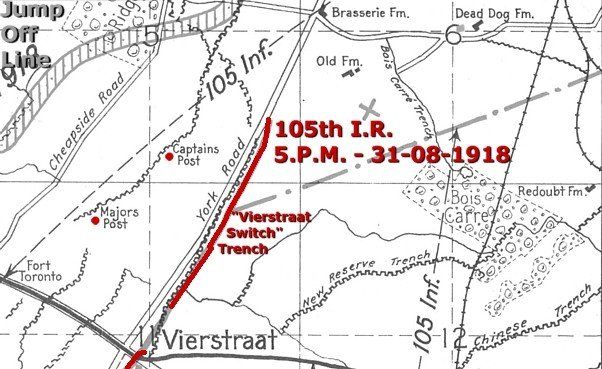
" In similar manner south of the highway above referred to, the 106th Infantry advanced in their sector across the Cheapside Road, and crossing the York Road, occupied and consolidated the enemy trenches known as Vierstraat Switch, running along the easterly side of York Road."
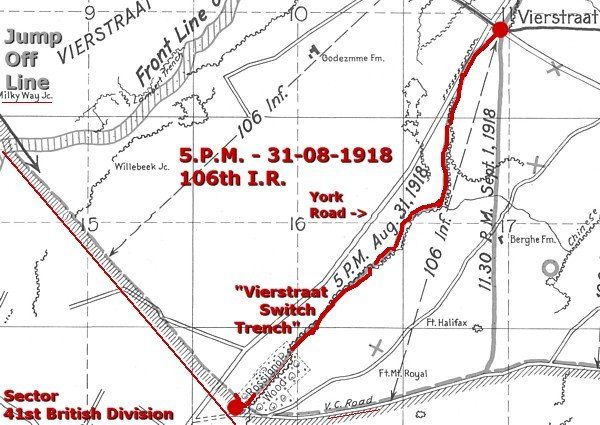
"T he attack of the 106th Infantry covered a greater depth than that of the 105th, as will be seen from an inspection of the map, the southern boundary line of their advance extending from the Milky Way to the V. C. Road east of Rossignol Camp."
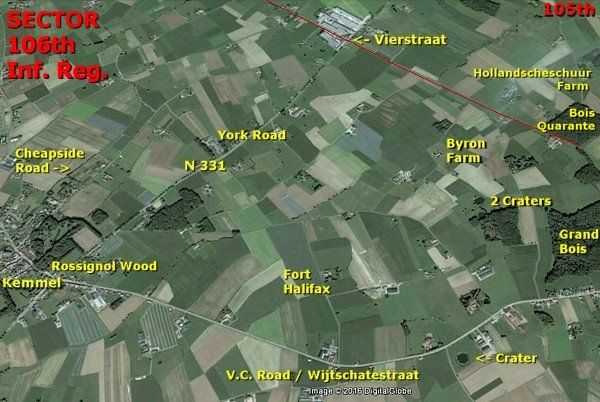
"
By 5:00 P. M., both regiments were engaged in consolidating the new line, which included what was left of the village of Vierstraat. Both regiments had taken a number of prisoners and had captured considerable booty in the way of machine guns, anti-tank rifles, grenades, ammunition and other supplies. ”
1-2 September 1918

From 1 September until the afternoon of 2 September the 106th I.R. had great difficulty in capturing the “Chinese Trench”, east of the N 331 and at the foot of Wijtschate Ridge.
Maj. Gen. O’Ryan tells us about these problems:
“The following day the 105th Infantry were to hold their position, while the 106th Infantry, with their left as a pivot, connecting with the 105th at the village of Vierstraat, were to advance on the right from Ft. Halifax until their line ran due north and south.
This movement was successfully made by the 106th Infantry, which had completed its task by 11:30 on the morning of September 1st. The enemy's defense from this time on was considerably strengthened."
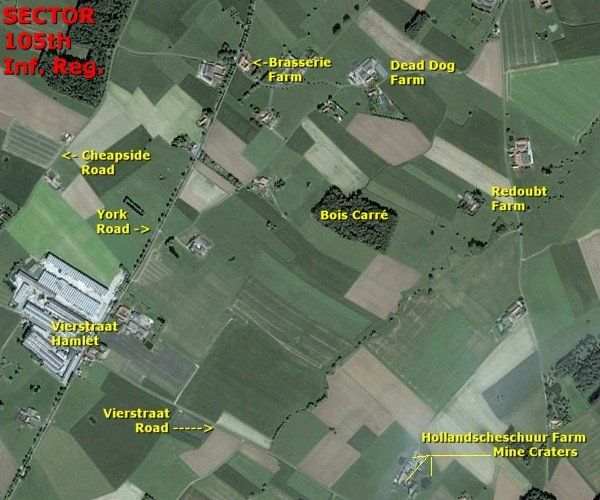
" The 105th Infantry, having extended its left beyond Middle Farm, now attacked Redoubt Farm and the trenches in Carré Farm, and later the railway and that part of the Chinese Trench within its sector."
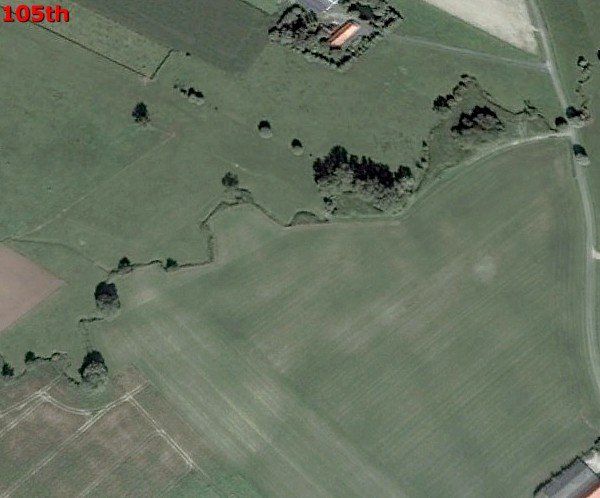
"
At the same time the 106th, with its front extending north and south, attacked and took Chinese Trench on both sides of the Vierstraat-Wytschaete road, within its sector.
Captain Harry F. Sullivan's company, M of the 106th Infantry, with other detachments from the same regiment, got into the Chinese Trench but were subjected to a severe enemy artillery bombardment, preliminary to a counter-attack."

"
The casualties were such that Captain Sullivan withdrew the troops under his immediate command for a short distance and the enemy counter-attacking troops regained Chinese Trench. Orders having been issued for the retaking of Chinese Trench, an attack was made after artillery preparation and the trench was regained and held by parts of the 106th Infantry. By hard fighting the 106th Infantry on the same day advanced to the line of the railway near the foot of Wytschaete Ridge.
On the following day, the divisional line was advanced to Northern Brickstack on the south and thence due north along the ridge from Northern Brickstack to Middle Farm. This line was secured late in the afternoon of September 2d. ”
Incident in the Chinese Trench
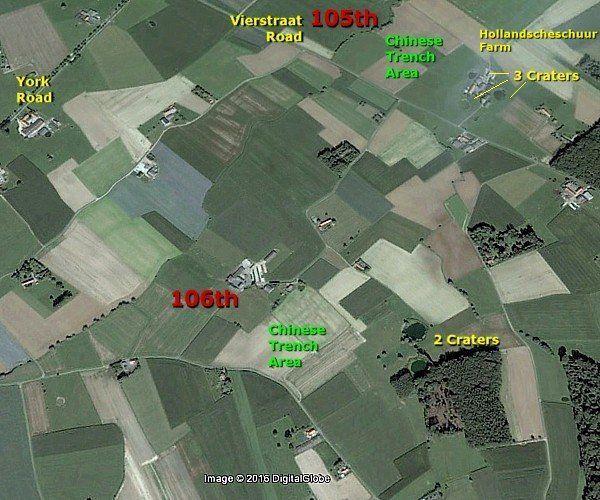
Maj. Gen. O’Ryan describes an incident in the Chinese Trench, which illustrates the German confidence in their elastic in-depth defence tactics, and also the poor quality of the 1918 German bandages:
“One interesting incident that happened in this battle occurred when two seriously wounded men of Captain Sullivan's company of the 106th Infantry were necessarily left in Chinese Trench when the company withdrew.
When the counter-attacking German forces entered the trench they found the two wounded soldiers of the 106th Infantry lying there. The latter apparently expected to be killed. Promptly their first aid packets were confiscated, but their wounds were dressed with German paper bandages and the men made as comfortable as could be under the circumstances.
A German officer, who spoke English, notified the men that his command were Saxon troops, who always treated their enemies in chivalrous manner. He added that the Americans were apparently preparing to retake the trench; that the Americans did not seem to care whether they were killed or not, and that the trench was not worth holding anyway. He added that his force would anticipate the counter-attack by retiring and that soon they would again be in the hands of their friends. Thereupon he and his men withdrew. Shortly thereafter, supported by artillery fire, through which the two wounded men happened to survive, the detachment of the 106th Infantry, as already narrated, retook the trench and heard from the wounded men the foregoing account of their experience.”
From: Major General John F. O’Ryan: “The Story of the 27th Division” (1921)
End of the Battle
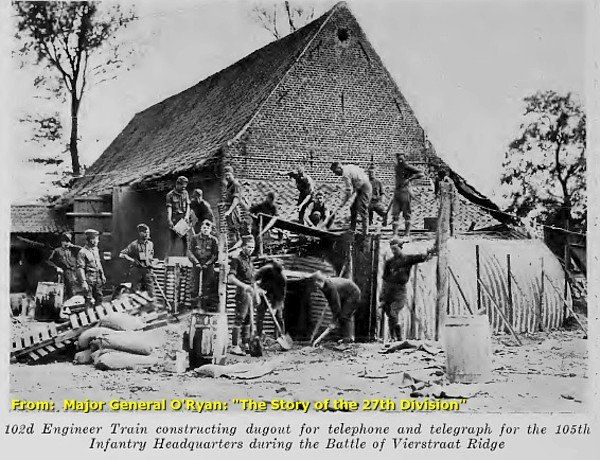
In the afternoon of 2 September 1918 the 27th Division captured a line in front of the Bois Confluent, Bayernwald, and the Grand Bois, at the foot of Wytschaete Ridge. The division was relieved on the night of 2-3 September by the 41st British Division. By rail the Division departed to another front sector near Beauquesne, France.
Casualties
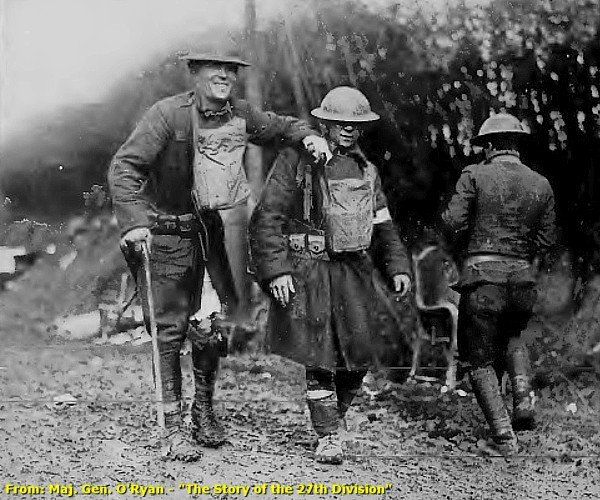
According to Maj. General O’Ryan the casualties of the 53rd Infantry Brigade were:
“Killed and died of wounds 40 - Shell wounds 126 - Gunshot wounds 150 - Gassed 33 - Total 349.
Forty-seven German soldiers were taken prisoner in this battle. During the battle of Vierstraat Ridge the following material was captured: 63 Machine Guns, 11 Minenwerfers, 1 Field piece (artillery)."
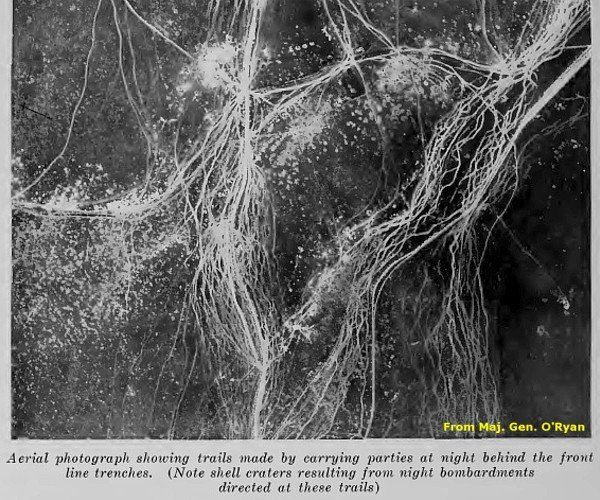
Post war reactions of von Hamann and von Kolaczek
After the war, Maj. Gen. O'Ryan corresponded sometimes with his former enemies; with Lieutenant General von Hamann, who commanded the 8th Prussian Division, and with his Chief of Staff, Major von Kolaczek. With pride O'Ryan quotes the testimonials of his former opponents:
"Referring to the period following August 21st, the date when the 27th Division went into the line in that sector, Major Kolaczek writes: "During these days our numerous night patrols always encountered strong and extremely alert garrisons in the opposing trenches. They did not succeed in bringing in any prisoners."
Referring to the battle of Vierstraat Ridge, Lieutenant General von Hamann writes: "Reports reaching me from all sources, particularly from our artillery observation posts, were that your infantry was unusually energetic in their attack."
Source: Major General John F. O’Ryan: “The Story of the 27th Division” (1921)
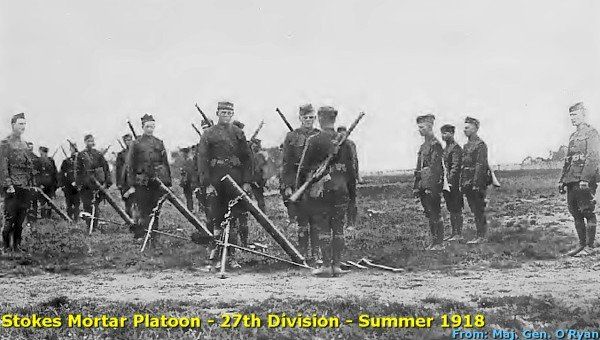
The inscription on the Kemmel American Monument .
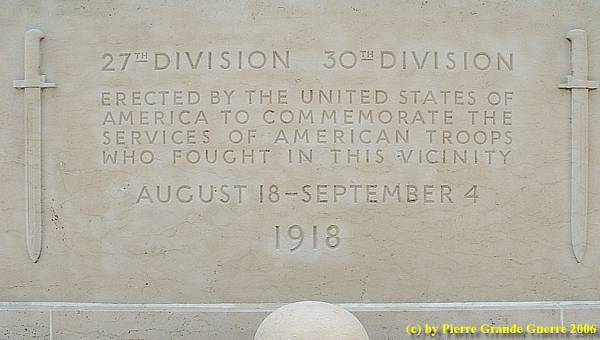
Tele view from the American Monument in the direction of the Chinese Trench, at Wijtschate Ridge and its woods.
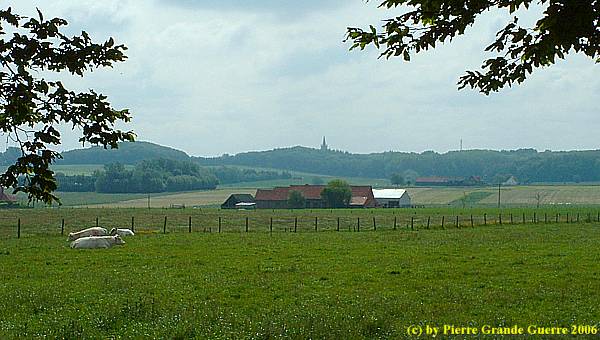
View from the Kemmel American Monument across the N 331, south-westward to Mount Kemmel.
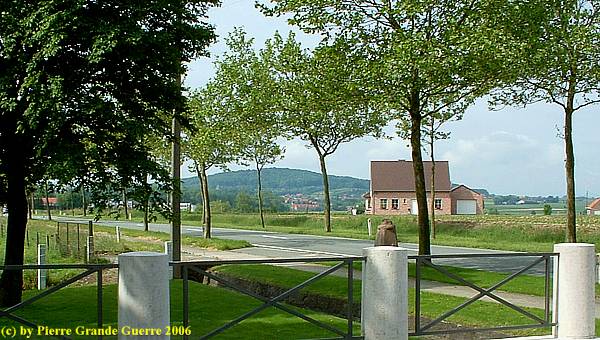
From the Kemmel American Monument we continue to the village of Kemmel. We pass the village and west of Kemmel we visit Mount Kemmel (156 m.) or “Kemmelberg”.
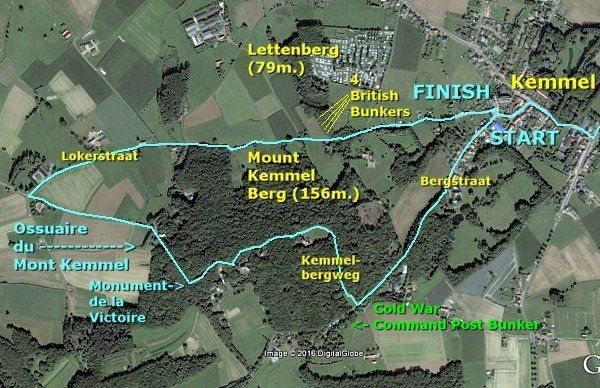
On the summit of Mount Kemmel: the Memorial for the French Army.
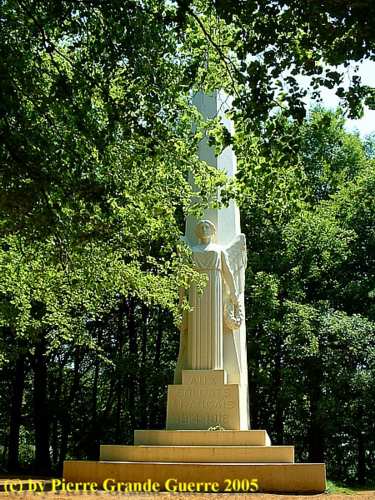
The statue of the Angel of Victory is a tribute to all French troops, who served on Belgian soil.
Sometimes it seems to be forgotten that next to the Belgian and British Armies units of the French Army defended Belgian soil from the early start of the war, occupying various front sectors during the three great Battles of Ypres. You might argue that it was in the strategic interest of France to fight a forward defensive war on Belgian soil, and you may be partly right. Nevertheless, the fact stands that thousands of French officers and soldiers of several units, including colonial troops, suffered heavily during their four years of deployment in the Ypres Salient and on the Yzer Front, many of them sacrificing their lives to defend Belgium.
The sad story of the 1918 Battle of Mount Kemmel is only one episode out of many of how French troops took many casualties on Belgian soil.
Mount Kemmel
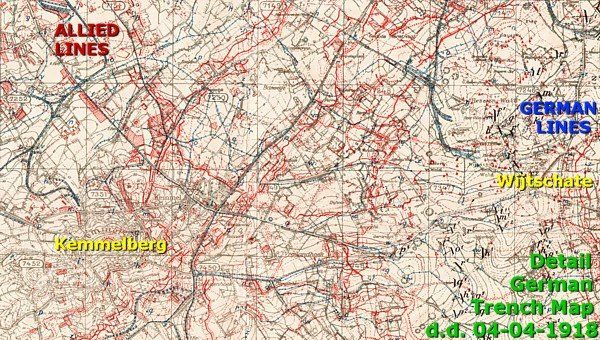
Since November 1914 British troops were constantly busy to construct a stronghold on Mount Kemmel with several dug-outs, observation posts and artillery batteries, which had a clear field of fire on the German positions.
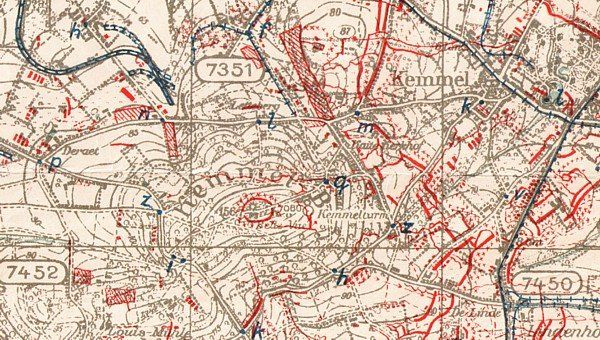
For a long time this Mount Kemmel artillery base annoyed the Germans, as we may conclude from this quotation of the “Bericht aus dem deutschen Großen Hauptquartier vom 17. Juli 1918”:
" … the Kemmelberg has served the enemy as a firm underground network, as a basis for its heavy batteries and as a support of his observation posts, its views on the country, far behind the German lines, with its point of view on the houses robbed of the coverage of hedges and its dense tree growth in incessant battles, (this country) was lying more and more openly.”
(Source: Stahlgewitter.com )
Battle of the Lys (9-29 April 1918)
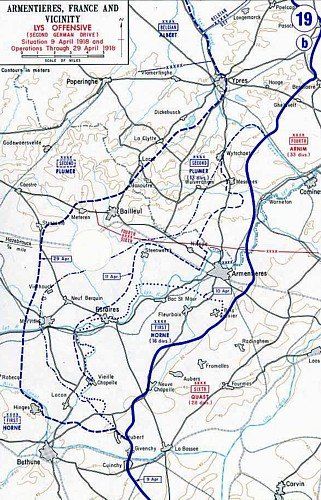
During the Battle of the Lys (9-29 April 1918), the 4th Army under command of General Friedrich Sixt von Armin opened an offensive against the British 2nd Army of General Plumer between Armentières, France, and Hollebeke, Belgium.
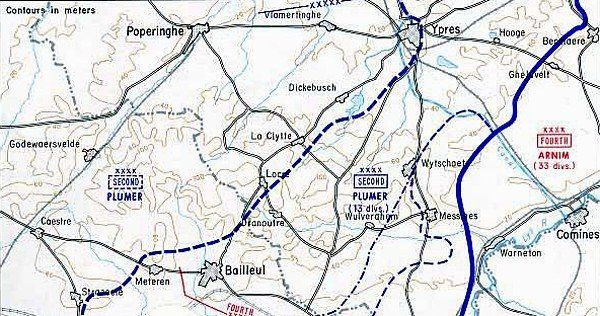
First Battle of Kemmel (16–19 April 1918)
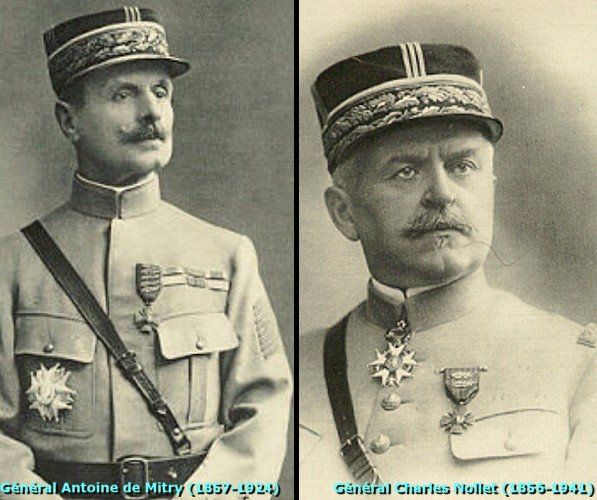
From 16 to 19 April 1918 the British were rather successful in defending their positions on and around Mount Kemmel against the 4th Army. From 19 to 24 April 1918 General Nollet’s French 36 Army Corps, part of the French 9th Army of General de Mitry, strengthened with three extra divisions, relieved the British. Four French infantry regiments took over the positions of Mount Kemmel from the battle-weary British troops.

On 19 April 1918 General von Armin planned an attack, starting on 23 april, of the X. und XVIII. Reserve-Korps on the villages of Dikkebus in the north and southward to Voormezele and Kemmel.
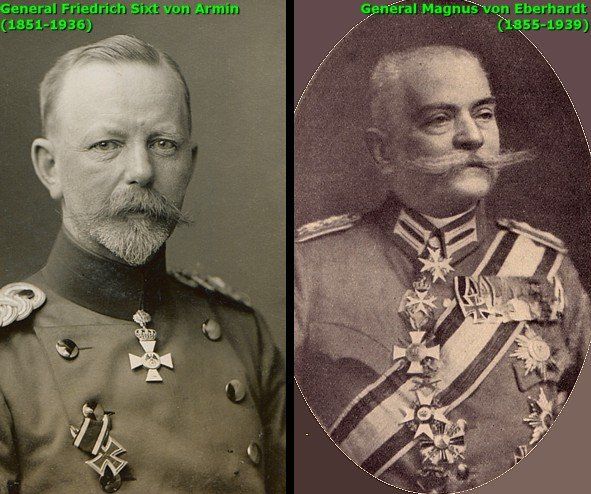
The “Gruppe von Eberhardt”, an army group named after its general and consisting of units of the X. Reserve Korps and the “Alpen Korps”, had the task of capturing the front sector of Mount Kemmel.
The Second Battle of Kemmel (25-29 April 1918)
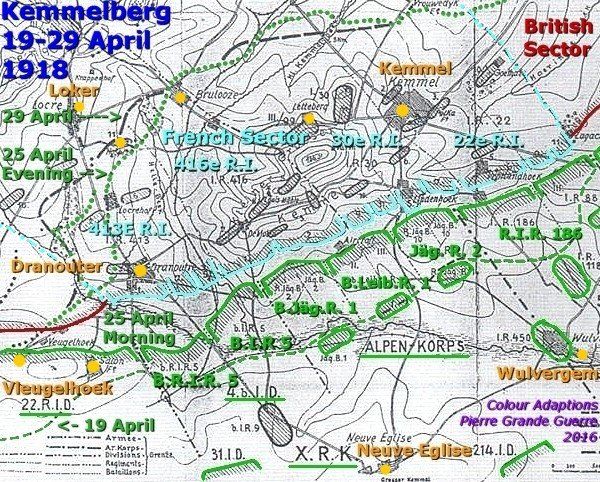
From 19 April the “Gruppe von Eberhardt” possessed a line starting in the east, next southward to Wulvergem, south-westward to Neuve Eglise, and more to the west “Salon Farm”, and a location, south-west of Dranouter, the heights of Vleugelhoek, a name which completely disappeared on modern maps. On 24 April the “Gruppe von Eberhardt” prepared at the south-east foot of Mount Kemmel the attack of 25 April.
The Second Battle of the Kemmelberg began in the morning of 25 April 1918. During the night, from 3.30 hrs., the German artillery opened fire, launching also a large amount of gas grenades, on positions on the left flank of the British XXII. Corps of General Godley: directly on the French troops of the 413e, 416e, 30e and 22e Régiments d'Infanterie on the “Kemmelberg”.
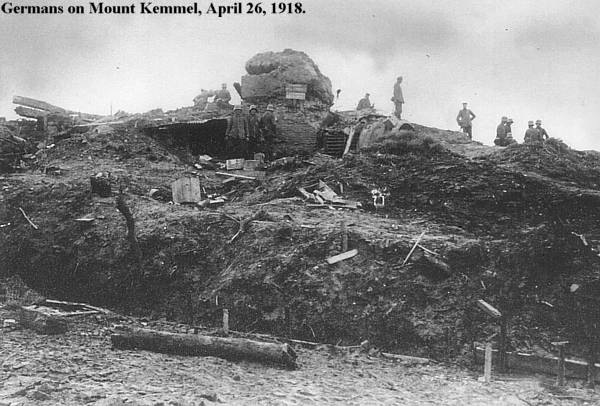
At 6.45 hrs. the soldiers of the German “Alpen-Korps ”, mainly Bavarian “Jäger” Batallions, stormed successfully the Kemmelberg. By 1918 all " Jäger Bataillone" were well trained and battle-hardened experts in storm troop tactics. During the Bavarian storm attack the French reinforced their defence with fierce air attacks on the Jäger, but to no avail. It took the Gruppe von Eberhardt less than a day to force the French to withdraw to the north at the Rodenberg and the Scherpenberg, hills near Loker.
On 26 April the French counterattacked to re-capture the Kemmelberg front sector without success, causing more severe French casualties. According to the German censored Flemish newspaper, “ Het Vlaamsche Nieuws ”, of 27 April 1918 the Gruppe von Eberhardt made 6,500 soldiers Prisoners of War, some British but mainly French soldiers.
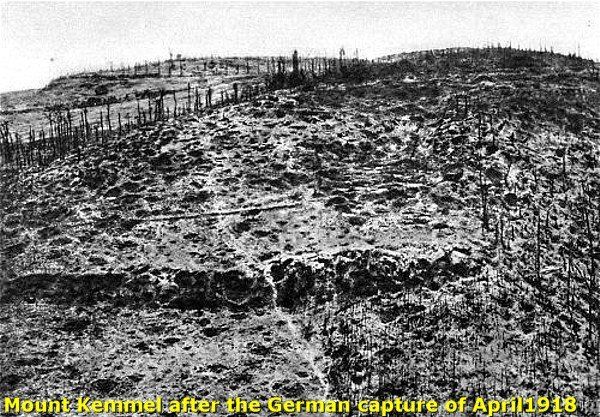
As we can see on this British trench map of July 1918, the Germans gained considerable terrain, beyond the Kemmelberg, called the Lys Salient, having all the strategic advantages of observation and artillery of the hill, which their enemies had.
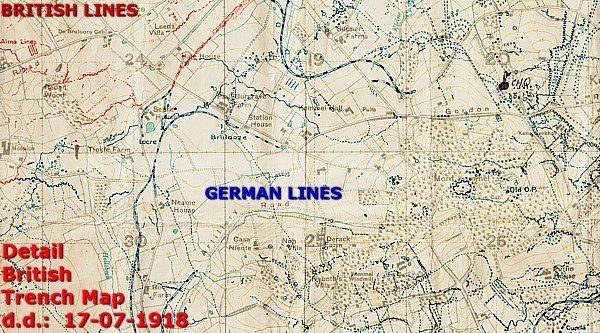
Exact casualty numbers of both belligerent parties of the Kemmelberg are lost and incorporated in the larger lists of casualties of the Battle of the Lys. An indication of the death toll of the French on Mount Kemmel is to be found on the site we will visit next, after this frame: the "Ossuaire du Mont Kemmel": 5,492 officers and soldiers!
On 29 April General der Infanterie and Erster Generalquartiermeister Ludendorff , executive Commander-in-Chief of the German Army, ordered all offensives on the Western Front to cease.
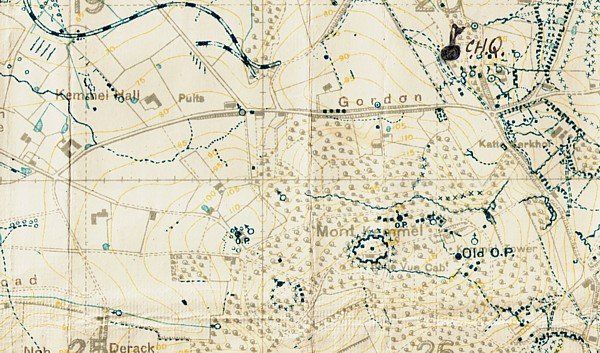
As we have seen above: In advance of the final Allied Offensive of 25 September, from 18 August until 4 September the American 27th and 30th Divisions would be the first to attack the German Lys Salient and the Kemmel front sector, north-east of Mount Kemmel.
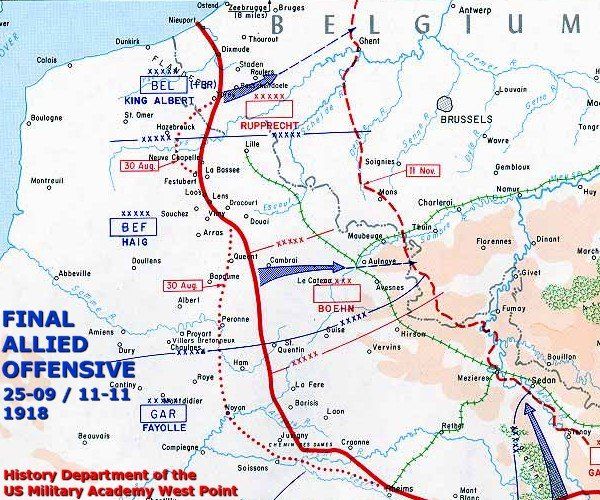
(Some period maps, courtesy of Monsieur Dominique Bascour, France)
Before we continue to my modern photos of the French “Ossuaire du Mont Kemmel”, I show below an illustrated frame, meant for my loyal visitors from Belgium and the Netherlands and for others, who understand Dutch. The photos in the frame below are scans of the newspaper article, an official message of the German Army, referring to the Battle of Kemmel from the German censored Flemish newspaper, “ Het Vlaamsche Nieuws ”, of 27 April 1918.
Non-Dutch speakers possibly would like to skip these scans and continue scrolling down to the “Ossuaire du Mont Kemmel”.

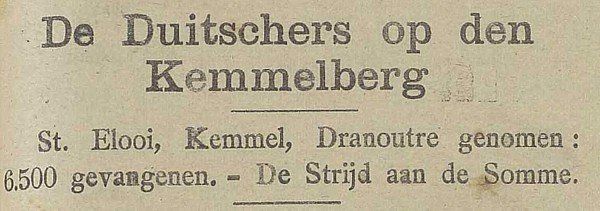
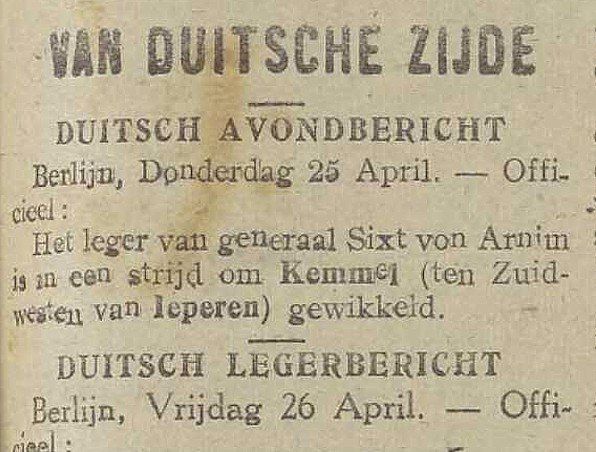
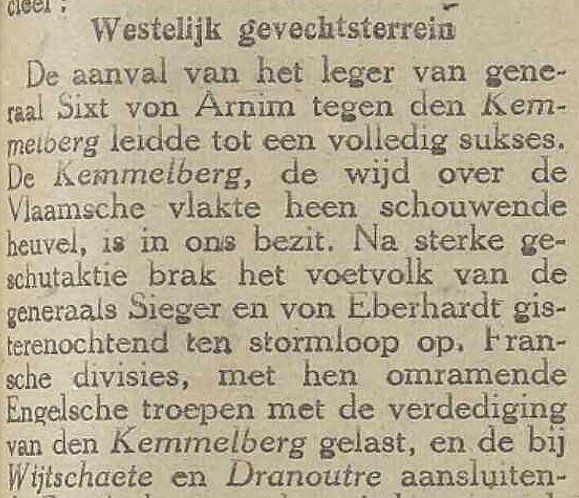
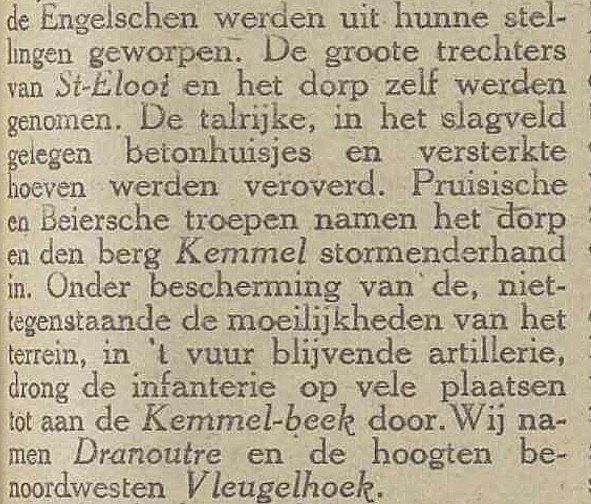
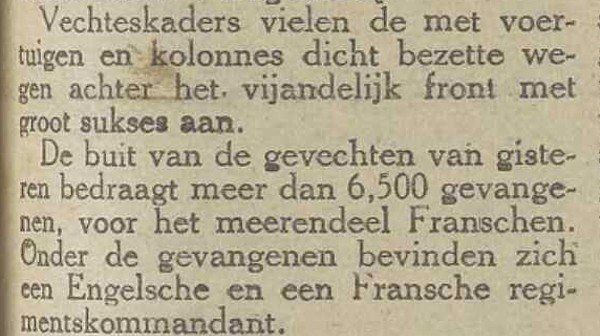
From the French "Ange de Victoire" Memorial, ...

... we descend a few hundred metres westward to the edge of the wood.
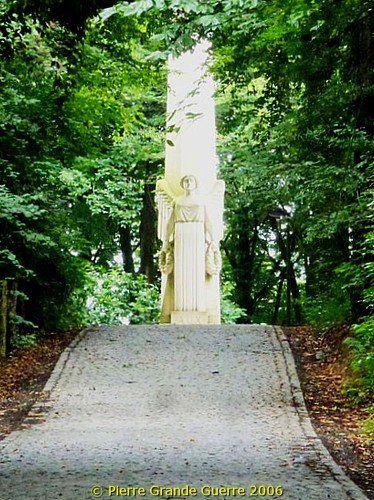
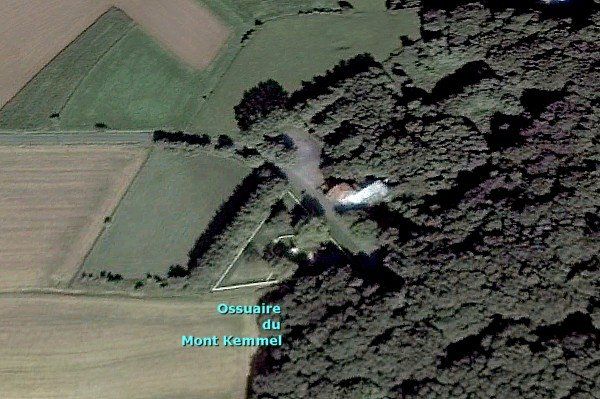
On the north-west edge of the wood we visit the two communal graves for 5,294 French soldiers, fallen here on Mount Kemmel, on Belgian soil.
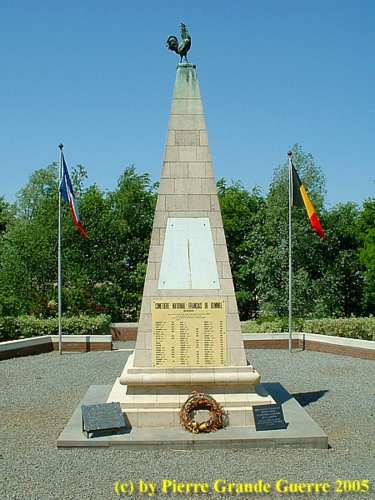

| Photos and translations of the inscriptions on the "Ossuaire du Mont Kemmel" Memorial |
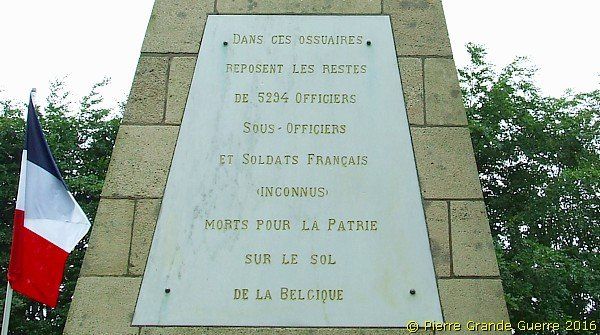
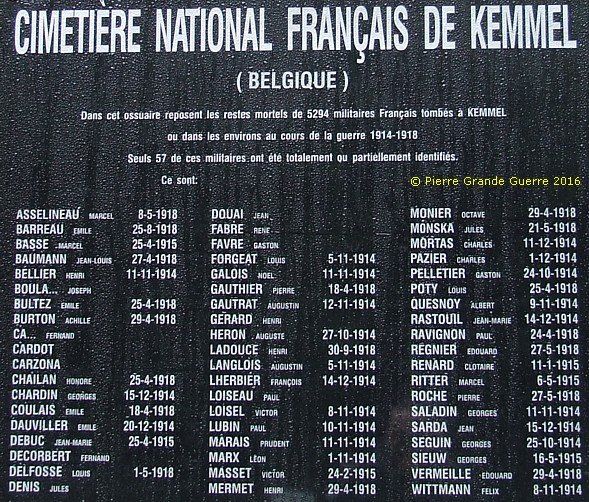
“FRENCH NATIONAL CEMETERY OF KEMMEL (BELGIUM) – In this Ossuary rest the mortal remains of 5,294 French soldiers, fallen at Kemmel and its surrounding area during the war of 1914-1918. Only 57 of these soldiers have been identified
, completely or partly. They were: …”.
Followed by a list of 57 names killed during the year of 1914, 1915, 1917, and 1918.
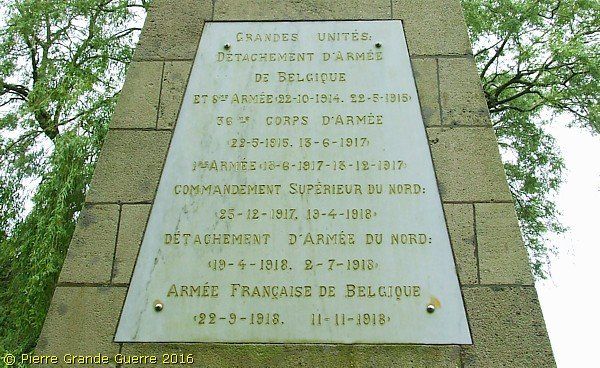
The names of the large units, initially and / or partly detached to the Belgian army.
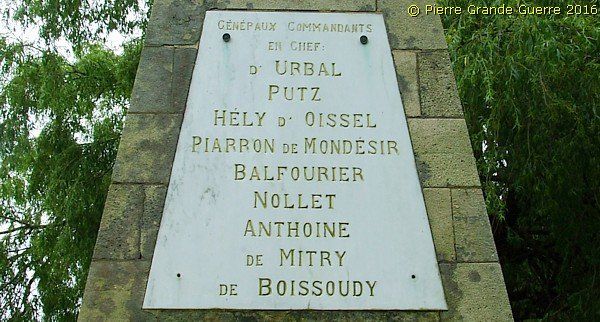
Names of the French Generals and Commanders in Chief, who served in Belgium.
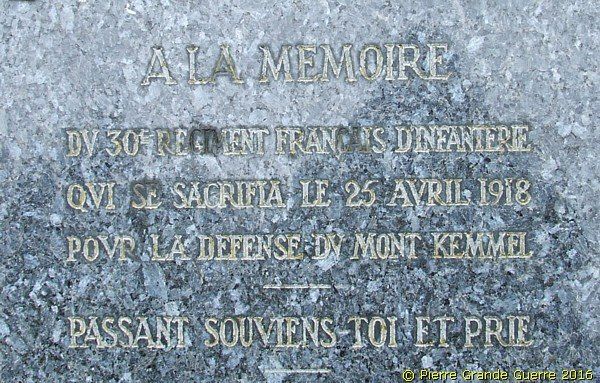
“IN MEMORY OF THE FRENCH 30th INFANTRY REGIMENT WHICH SACRIFICED ITSELF ON 25 APRIL 1918 FOR THE DEFENCE OF MOUNT KEMMEL – PASSER-BY, REMEMBER AND PRAY”

From the Ossuaire site a view southward over the Franco-Belgian border to France.
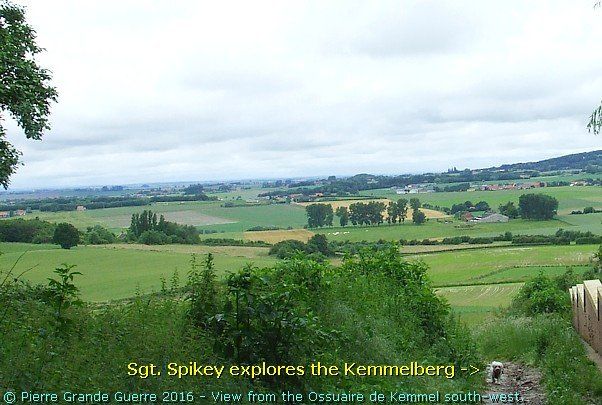
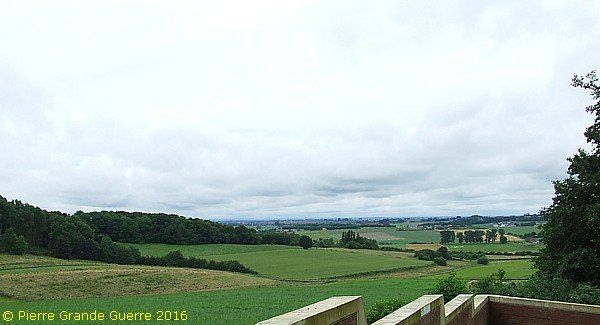
We leave the site to continue westward, ...

... passing this view of the landscape over the Lokerstraat northward.
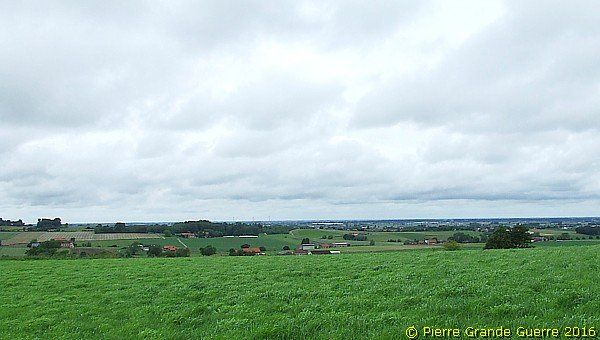
At the foot of the hill we turn right at the Lokerstraat to continue eastward in the direction of the village of Kemmel.
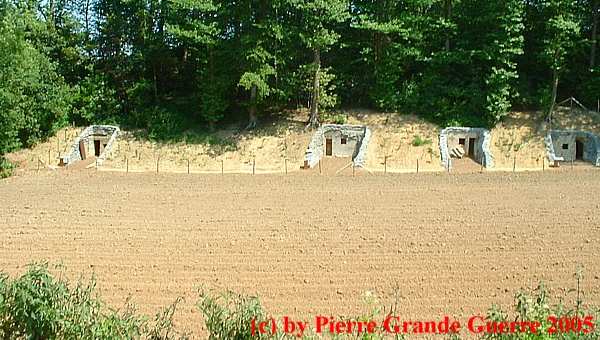
From left to right ...
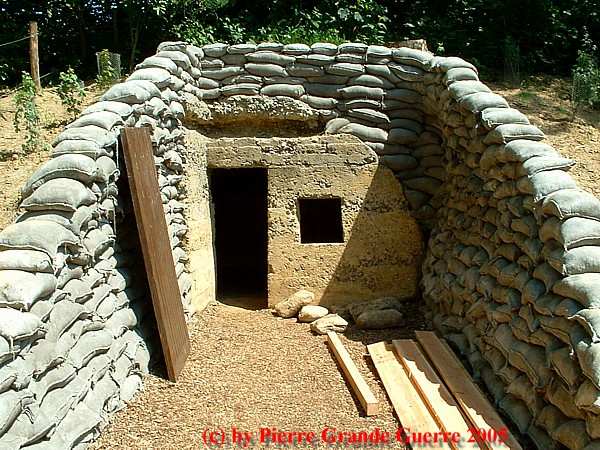
The Lettenberg is a small hill (79 m.) just north of Mount Kemmel.
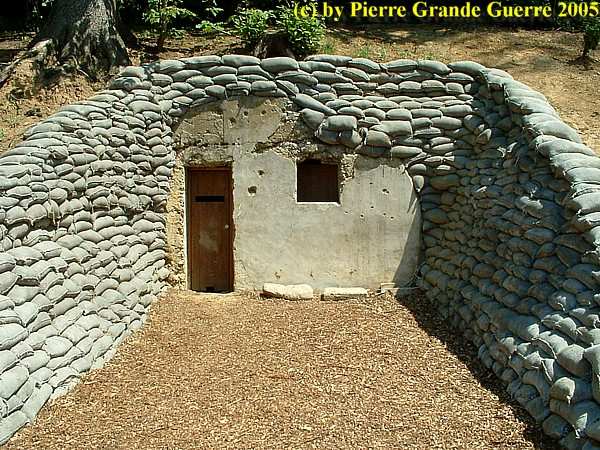
Between April and May 1917, ...
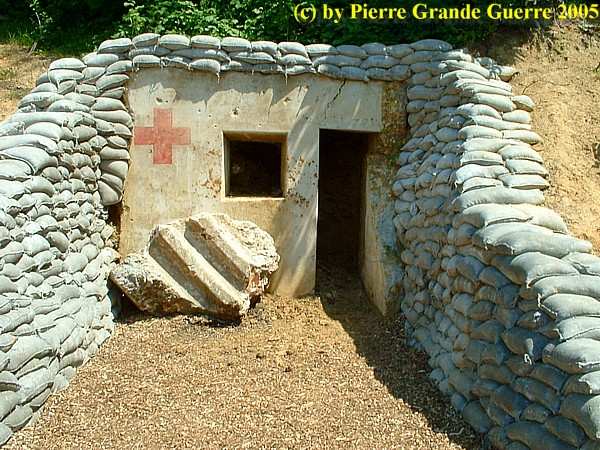
... the 175th Tunnelling Company constructed this brigade headquarters...
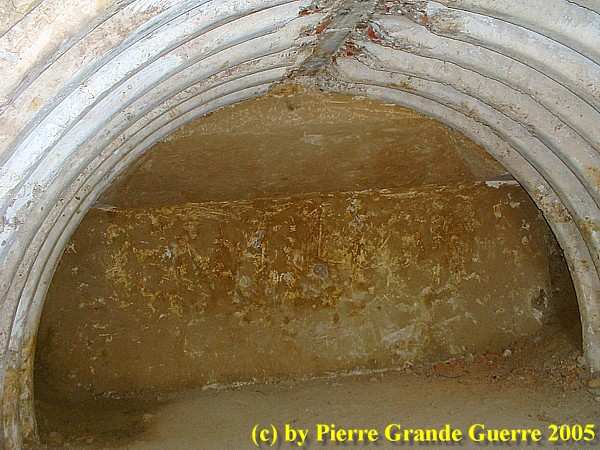

A last view at the bunkers.











